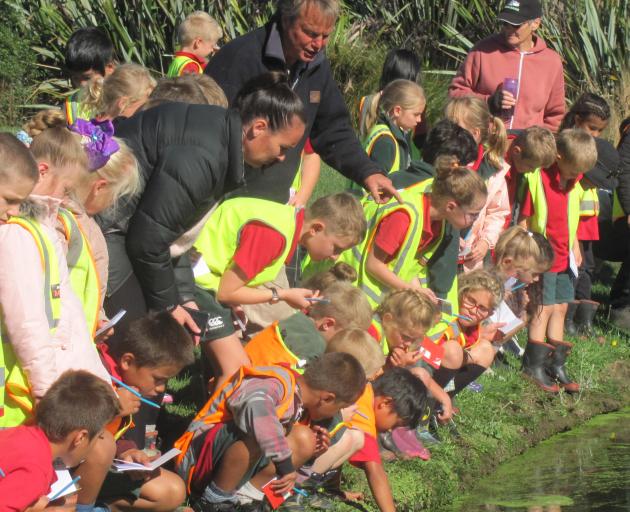
Its members want to connect the cultural, economic, environmental, social and recreational values of the area through education in schools and story-telling, getting friends and neighbours working side-by-side with industry, conservationists and youth.
They say nationally there is a clear legislative and voluntary mandate to think and act more sustainably but locally the message is fragmented and often lost.
''Together [through community-led projects] we can create a strategic vision of what success looks like in regards to connecting our land and water, cultures and communities.''

The whole school, split into three groups, took part in a full-day programme organised by members of the Kanuka Mid Canterbury Regeneration Trust.
They visited the farm properties of Graham and Gill Harris (Lowcliffe), Ian and Di Mackenzie (Eiffelton) and Bob and Jane Ellis (Hinds).
The Mackenzie and the Harris farms have wetland areas; and the Ellises have a section of the Hinds River northern drain which needs riparian planting.
The children have been tasked to come up with a plan to replant the area.
Trust founder and community connector Angela Cushnie said at the Harrises' coastal wetland, which had a QEII National Trust covenant placed on it, trust central Canterbury representative Alice Shanks led the children with activities and talks about plant identification and erosion of the cliffs.

They also made flax flowers.
At the Mackenzie wetland, landowner Ian Mackenzie - a third-generation farmer on the Akaunui Farm site - talked to the children about the endangered mudfish which live in the farm's Purakaunui Creek.
The waterway, which winds about 1.5km through the farm and ends with a series of pond sites, is inhabited by mudfish.
Mr Mackenzie caught live samples overnight for the children to view and draw.
He also showed them his cage trap.
Many of the mudfish were 2 to 3 years old, and between 5cm and 10cm long.
The eggs were laid in late winter, and when they hatched in September-October the fry were clear, and like whitebait, swam in a large shoal.
As they grew, their colour got darker and they started to hide from predators such as black shags, herons, kingfishers and eels.
They hid under the shade of native plants such as carex and flax and fed at night.
''There are higher levels of mudfish in the creek where eels don't swim to,'' he said.
''The problem is not a lot of people know a lot about mudfish. They do only live in Canterbury,'' Mr Mackenzie, who has more than 25 years' experience dealing with them on farm, said.
''But there's still a lot to learn.''
It was a challenge the pupils of the school were keen to pick up under the name of Mudfish Minions.













